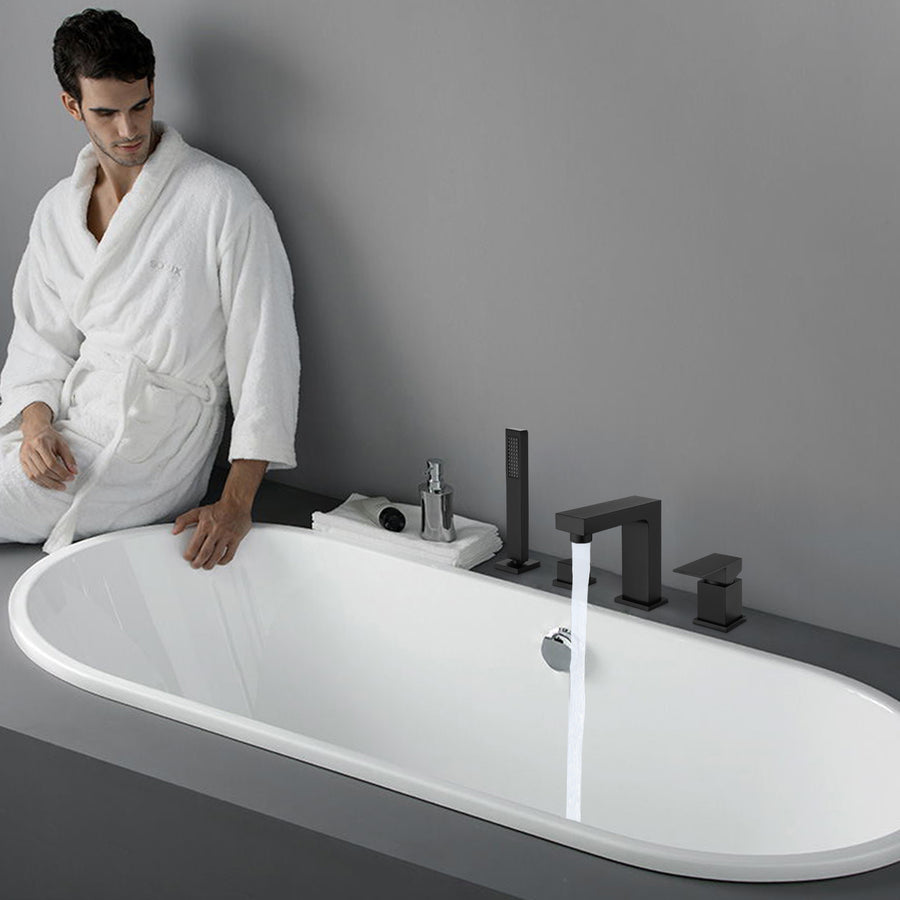Introduction
Brushed nickel bathroom faucets are a popular choice for homeowners who desire a blend of style and durability. Their matte finish not only adds a touch of sophistication to your bathroom but also resists fingerprints and water spots, making them easier to maintain. To keep your brushed nickel bathroom faucet looking its best, it's essential to understand how to properly clean and maintain it. In this comprehensive guide, we will explore the steps and techniques required to ensure your brushed nickel faucet remains in excellent condition. Let's delve into the world of brushed nickel maintenance.
Chapter 1: Why Choose Brushed Nickel Faucets?
Before we dive into maintenance, let's briefly discuss why brushed nickel bathroom faucets are an excellent choice.
Aesthetic Appeal
Brushed nickel faucets are favored for their elegant appearance. The matte finish and subtle texture of brushed nickel create a timeless and versatile design, suitable for both contemporary and traditional bathroom styles.
Durability
In addition to their aesthetic appeal, brushed nickel faucets are renowned for their durability. They are resistant to corrosion, tarnishing, and scratches. This durability ensures your faucet will withstand daily use and maintain its aesthetic appeal over time.
Chapter 2: Routine Cleaning and Maintenance
To keep your brushed nickel faucet looking its best, incorporate simple daily practices like wiping the surface with a soft, damp cloth and drying it thoroughly after use. This prevents water spots and mineral buildup.
In addition to daily maintenance, consider establishing a regular cleaning routine. This routine should include a combination of gentle cleaning and proper drying techniques. These practices ensure your faucet remains sparkling and resistant to water spots and mineral deposits.
Avoid Harsh Cleaners
Avoid abrasive or harsh cleaning products, as they can damage the brushed nickel finish. Opt for mild, non-abrasive cleaners and soft cleaning tools like microfiber cloths and sponges to prevent scratches.
Chapter 3: Weekly Cleaning

A weekly cleaning routine can help maintain your faucet's shine. Gently clean the faucet with warm, soapy water using a soft cloth, followed by a thorough rinse and drying. This routine helps prevent soap scum and mineral buildup, keeping your faucet in top condition.
In addition to soapy water, a mixture of mild dish soap and warm water can be used to clean the faucet. Be sure to rinse and dry thoroughly after cleaning.
For more stubborn spots and stains, especially in hard water areas, you can add a mild acid, such as vinegar, to your cleaning routine. A mixture of equal parts vinegar and water can help dissolve mineral deposits. However, it's important to rinse and dry the faucet thoroughly after using vinegar to prevent any potential damage.
Chapter 4: Removing Mineral Deposits
Mineral deposits from hard water can be a common issue for faucets. Learn how to effectively remove them.
Vinegar Solution
Using a vinegar solution can effectively dissolve mineral deposits. To create the solution, mix equal parts of white vinegar and water. Dip a soft cloth or sponge into the solution and gently rub the affected areas. This will help break down and remove mineral deposits. Be sure to rinse thoroughly with clean water and dry the faucet afterward.
Baking Soda Paste
Baking soda is a gentle abrasive that can help remove stubborn mineral deposits. Create a paste by mixing baking soda with water to form a thick consistency. Apply the paste to the affected areas and gently rub it with a soft cloth or sponge. This should help lift the mineral deposits. Rinse thoroughly and dry the faucet to prevent any residue.
Chapter 5: Dealing with Stains and Rust
In this section, we'll explore how to address stains and rust spots on your brushed nickel faucet.
Removing Stains
From toothpaste to hair dyes, bathroom stains are common. To remove these stains without damaging the finish, create a paste by mixing baking soda and water. Apply the paste to the stained areas and gently scrub with a soft cloth or sponge. Rinse thoroughly and dry to maintain the faucet's shine.
Dealing with Rust
Rust can be an issue, but it's manageable. To remove rust spots from your brushed nickel faucet, use a mixture of lemon juice and baking soda. Create a paste by combining these ingredients and gently scrub the rust spots. Rinse and dry the faucet thoroughly to prevent any potential damage. Additionally, identifying the source of rust and addressing it can help prevent future occurrences.
Chapter 6: Protecting and Polishing
Regular maintenance and protection can help preserve your faucet's finish and shine.
Protective Measures
To protect your brushed nickel faucet, consider applying a silicone-based sealant. This sealant can provide a protective barrier that prevents water and minerals from directly interacting with the faucet's surface. Apply the sealant as directed and ensure it is well-distributed.
Periodic Polishing
To restore the shine to your brushed nickel faucet, consider periodic polishing. Polishing can help remove minor surface imperfections and bring back the luster of the finish. Be sure to use a non-abrasive metal polish and follow the manufacturer's instructions for application.
Chapter 7: Maintaining Handles and Accessories
Learn how to maintain not only the faucet but also its handles and other accessories.
Handle Maintenance
Proper handle maintenance is crucial for smooth operation and overall appearance. To clean handles, use the same techniques and materials as for the faucet. Ensure that the handles are free from mineral deposits, stains, and rust. Regularly inspect the handles for any loose parts and tighten them as needed.
Accessory Care
Accessories like soap dispensers and towel bars also require attention. To clean these accessories, use the same cleaning techniques as for the faucet. Ensure that they are securely fastened and functioning properly.
Chapter 8: Additional Care Tips
In this section, we'll offer additional tips for maintaining your brushed nickel bathroom faucet.
Preventing Scratches
Prevent scratches by using soft materials and avoiding abrasive tools and cleaners. When storing items near the faucet, ensure they are not abrasive and can't accidentally scratch the finish.
Periodic Inspection
Regularly inspect your faucet and its components for signs of wear and tear, loose parts, or potential issues. Identifying problems early can save you time and money in the long run.
Usage Guidelines
Educate household members about the proper use of the faucet. Encourage turning the faucet handles gently and not using excessive force, which can strain internal components.
Conclusion
Properly maintaining and cleaning your brushed nickel bathroom faucet is essential to preserving its beauty and functionality. With regular care, you can extend the life of your faucet and ensure it continues to enhance the overall appearance of your bathroom. By following the guidelines and tips presented in this comprehensive guide, you'll be equipped to handle routine maintenance, address common issues, and even take preventive measures to reduce the need for extensive cleaning. Your brushed nickel faucet will remain an elegant and enduring fixture in your bathroom, providing years of reliable service and timeless aesthetics.












